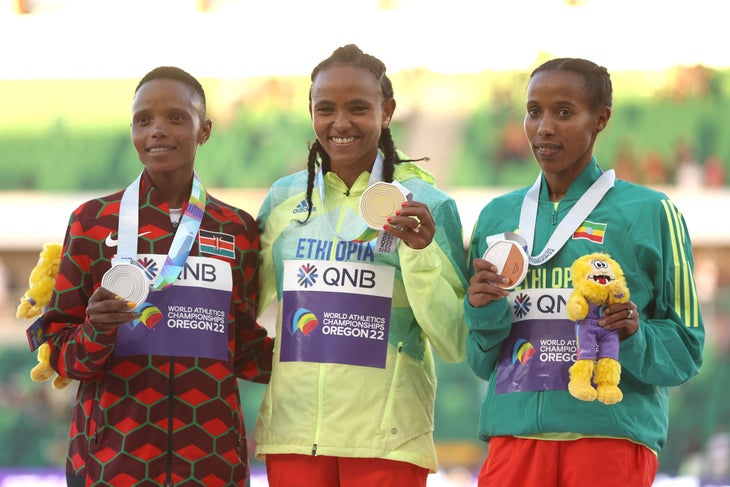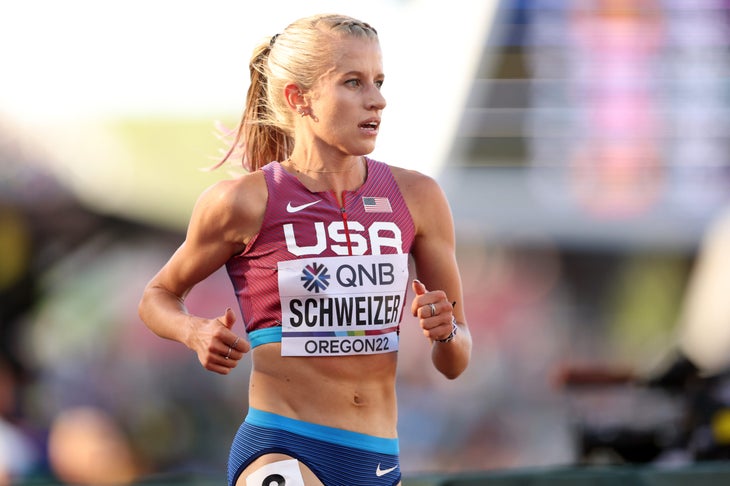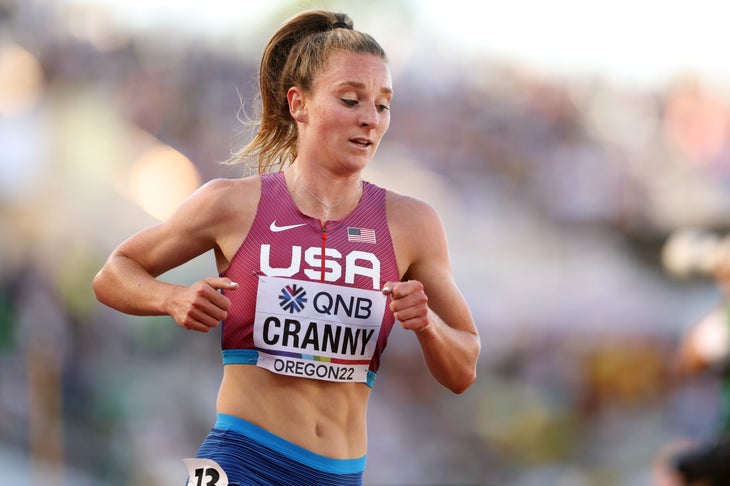Products You May Like
Get access to everything we publish when you
sign up for Outside+.
The women’s 5,000 is usually an event that’s dominated by east Africans on the global stage. All three Americans–Elise Cranny, Emily Infeld, and Karissa Schweizer–qualified for the final. But in the final they all struggled.
The pace was slow from the gun. Everybody was in the pack, in contention. Until about a kilometer into the race, the Ethiopians cranked down the pace. Infeld fell off the back as soon as they made that decision.
“The move really zapped my legs and then I couldn’t go,” she said. “It’s so frustrating when you try to latch onto people passing you and it just feels like you’re going backwards.”
Related: Meet The Three Women Running the 5000m for Team USA

Infeld faded, but the race continued in front of her. In the end, Gudaf Tsegay of Ethiopia won in 14:46.29. Beatrice Chebet of Kenya finished second in 14:46.75. Dawit Seyaum, also of Ethiopia, finished third in 14:47.36. Recognizable names Letesenbet Gidey and Sifan Hassan finished fifth and sixth respectively. They both were in the race the whole time; the other women just closed faster over the last half-lap.
Infeld got COVID immediately after the U.S. Championships a few weeks ago. She was at a high: She’d run well enough to return to the World Championships after a string of years that were marked by challenges. Then she hit a low: a dramatic scaling back of her training for multiple weeks heading into the most important race of her season.
“I went into it wanting to work hard but my legs just felt trashed,” she said. “But at the same time, I feel really proud of myself with where I’ve gotten to with my training after a rough past few years.”

Schweizer and Cranny stuck with the pace much longer. But Schweizer still fell of the lead pack midway through the race which feels uncharacteristic of her. In the 10,000 a few days ago, she held onto the pace set by the same women up until the final 200 meters.
With 600 meters to go, Schweizer started to walk. She was kind of walk-jogging. Something clearly wasn’t right. Her head tilted back. She wasn’t running in a straight line. She clearly needed medical attention. She was escorted off the track while the top women were finishing, certainly not conscious of what was happening in the stadium. She still hasn’t spoken to the media and no updates have been issued about the specifics of her injury.

Cranny held onto the lead pack until the bell lap. She ultimately finished ninth in 14:59.99.
“I went into the race thinking on a good day I could get top five, but everything changes so quickly when you’re out there,” she said.
Cranny, the second fastest American ever over 10,000 (30:14.66 from March of this year), was upset with her finish but also felt the result was bittersweet.
I asked her what she’d think if she knew at age 16 what she’d accomplish at age 25. “I could’ve never dreamed of this,” she said. “It’s crazy that now you’re here and you’re disappointed.”
“In the spring my freshman year of high school, both of my coaches told me, ‘You can run in college. Maybe you could get a scholarship,’” she said. “In high school I didn’t even follow professional running. It’s crazy to think this is where I am now.”
